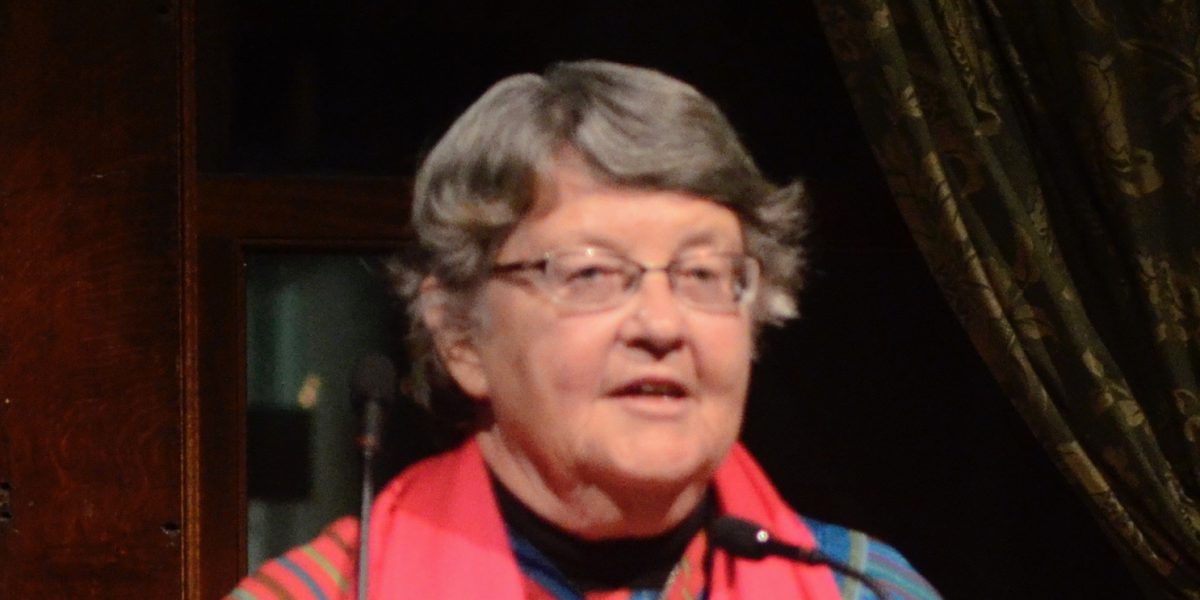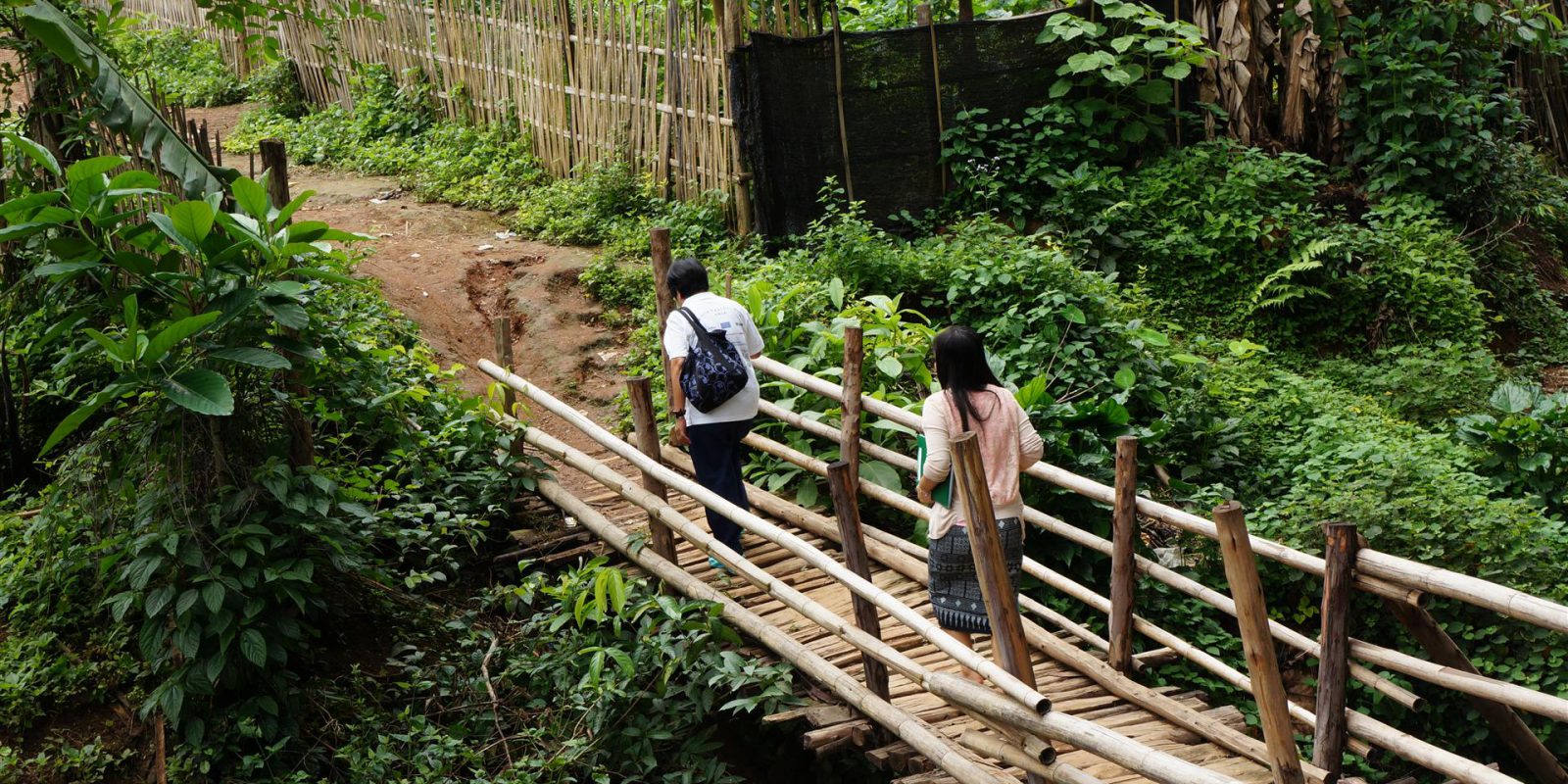Cambodia: mixed migration, protection for all
02 February 2016|Amaya Valcarcel and Nick Jones

Siem Reap, Cambodia, 2 February 2016 – “I have a very strong belief that the consequence of mercy, charity, and love is justice,” said Sr Denise Coghlan RSM, Director of the Jesuit Refugee Service (JRS) Cambodia.
In the region. Asia Pacific is home to some of the most vulnerable forced migrants: those who are undocumented – including victims of trafficking and smuggling, asylum seekers, refugees, stateless people and people in immigration detention centres.
Moreover, Asia also has the largest number of temporary contractual migrant workers in the world, many of whom move frequently throughout the region. Globally, China, the Philippines, Vietnam and Indonesia are among the countries from which the largest number of migrants leave.
People throughout the region seeking safety are becoming increasingly vulnerable. Lack of access to asylum procedures and rigid interpretation of the definition of a refugee, among other risk factors, are leaving many people undocumented and prone to criminal networks and exploitation. JRS Asia Pacific collaborates with the Jesuits in the region, serving vulnerable forced migrants and advocating for changes in policies and practices affecting them.
In Cambodia, JRS helps asylum seekers by listening to their stories and prepares briefs when they apply to the government refugee office or other relevant bodies. Though the number of cases is not extremely large, they are usually quite complex. Among the asylum seekers are Uighurs from China, Montagnards from Vietnam, the stateless Rohingya from Myanmar, as well as refugees from Afghanistan, Chad, Darfur, Iran, Iraq, Somalia and Sri Lanka, among others.
A Sister of Mercy and a native Australian, Sr Denise has served the displaced in Cambodia for the past 28 years, being one of the founding members of JRS Cambodia.
Sr Denise began working for JRS in 1988 in the refugee camps in Thailand near the Cambodian border – one of the most heavily mined areas of the world. Each day she met many people with missing limbs from landmines, an experience that moved and inspired her to become actively involved in the international campaign to outlaw the weapons.
In 1990, JRS and Sr Denise moved into Cambodia to promote reconciliation and peace in the wake of the brutal Cambodian civil war. An early JRS programme was initiated to bring together people with disabilities – many of who were former soldiers or militia from the four factions involved in the conflict who had lost arms, legs and eyes from landmines – for vocational training, and to help them serve as teachers in society.
Sr Denise is internationally recognised for her efforts to ban landmines and cluster bombs. She played a key role in the work of the International Campaign to Ban Landmines (ICBL) that led to the 1997 Mine Ban Treaty, an achievement for which the group shared the Nobel Peace Prize. She sits on the ICBL-Cluster Munition Coalition Governance Board, which advocates for universal acceptance of the treaty, survivor assistance, mine clearance and the monitoring of international law.
Sr Denise coordinates programmes at the Metta Karuna Reflection Center, in Siem Reap, northwest Cambodia, helping visitors reflect on the challenges in Cambodia through the eyes of the poor and the lens of interfaith cooperation. To improve the quality of life and the protection of rights of people with disabilities in remote areas the centre organizes outreach activities.
In 2015, Sr Denise received the JRS USA Accompany Award.
The following is an interview with Sr Denise:
Q: As Director of JRS Cambodia, what do you see as Cambodia’s main challenges for the protection of refugees?
The main challenge for the protection of asylum seekers in Cambodia is that the Government registers them and makes just refugee status decisions. The very vulnerable need assistance.
The decision at the end of January to register the 200 Montagnards who had been in limbo for months and threatened with deportation was a positive step. Refugees need proper documentation, just durable solutions and agreed guidelines for seeking citizenship to those who decide to remain in Cambodia.
Q: What are Asia Pacific’s main challenges for protection of refugees?
As it is worldwide, the people who are displaced or seek protection is very complex. It is a mixed group of people with mixed migration flows. Various people are labeled economic migrants because they are fleeing poverty. Some are fleeing political, religious or human rights abuses. Others are trafficked and some, like the ethnic Vietnamese in Cambodia or the Rohingya in Myanmar, are stateless.
All of these people have the right to protection but clearly the UN Refugee Convention only guarantees protection or calls for protection for those specifically covered by the convention, including those who have fled for fear of persecution due to race, religion, nationality or membership of a particular social group or political opinion. There are some international conventions that address some of the other issues, such as trafficking, statelessness and migrant workers but the implementation of these conventions in the light of big flows of people is seen as increasingly difficult.
A rethink of how forcibly displaced people can access protection, both in law and in practice, needs to be done by clever and compassionate minds. Academics who want to tackle these questions should dialogue with those both working at field level and more importantly with the people who are affected themselves such as refugees, asylum seekers, and migrant workers. Academia from a glass castle will not bring realistic responses unless they have direct contact with the affected people.
Q: How can the quality of life improve for refugees?
Well that’s a question we should ask refugees first but here are a few ideas.
I think for a refugee to be listened to, understood and accepted is most important. Current biases and prejudices that are often expressed on the media and by politicians do not help. Once we know a refugee as person just like ourselves, but in different circumstances, our attitudes can be transformed.
Hospitality, a welcoming attitude, being willing to stand in the shoes of another can make life a little better. A willingness to share our goods, money, and talents with those in need can enhance their quality of life. Compassion and respecting the dignity of others in all circumstances is also needed.
Q: What realistic solutions can governments adopt in the region and globally for people to access safety?
Proper reception places that welcome, listen, and suggest realistic options to people. That may even include suggesting that returning home is the best option available if there is no real safety concern.
Rich countries need a willingness to share their resources with less developed countries and not to build walls to keep asylum seekers and refugees out.
Q: What role do religious leaders have to enhance refugee protection from a multi-faith perspective?
To nurture their believers in the true teachings of their faith, which in all of the major faiths has compassion. Welcoming a stranger, sharing with those in need, justice, and “do to others what you like them to do to you.”
Q: What signs of mercy do you expect from us as an organization (JRS), from governments, and from ordinary people toward refugees during this year of mercy?
For JRS perhaps a continuing commitment to walk among those who are most vulnerable as we accompany, serve, and advocate. To stand for the protection of people forcibly displaced and to speak out like Pope Francis does.
I want governments to see other countries as places where human brothers and sisters live and to build up a truly global community.
For ordinary people this includes responding to the needs of their brothers and sisters from different parts of the world with open hearts and minds and to elect politicians who do the same.
–Amaya Valcarcel, JRS International Advocacy Coordinator and,
–Nick Jones, JRS Asia Pacific Advocacy and Communications Officer


